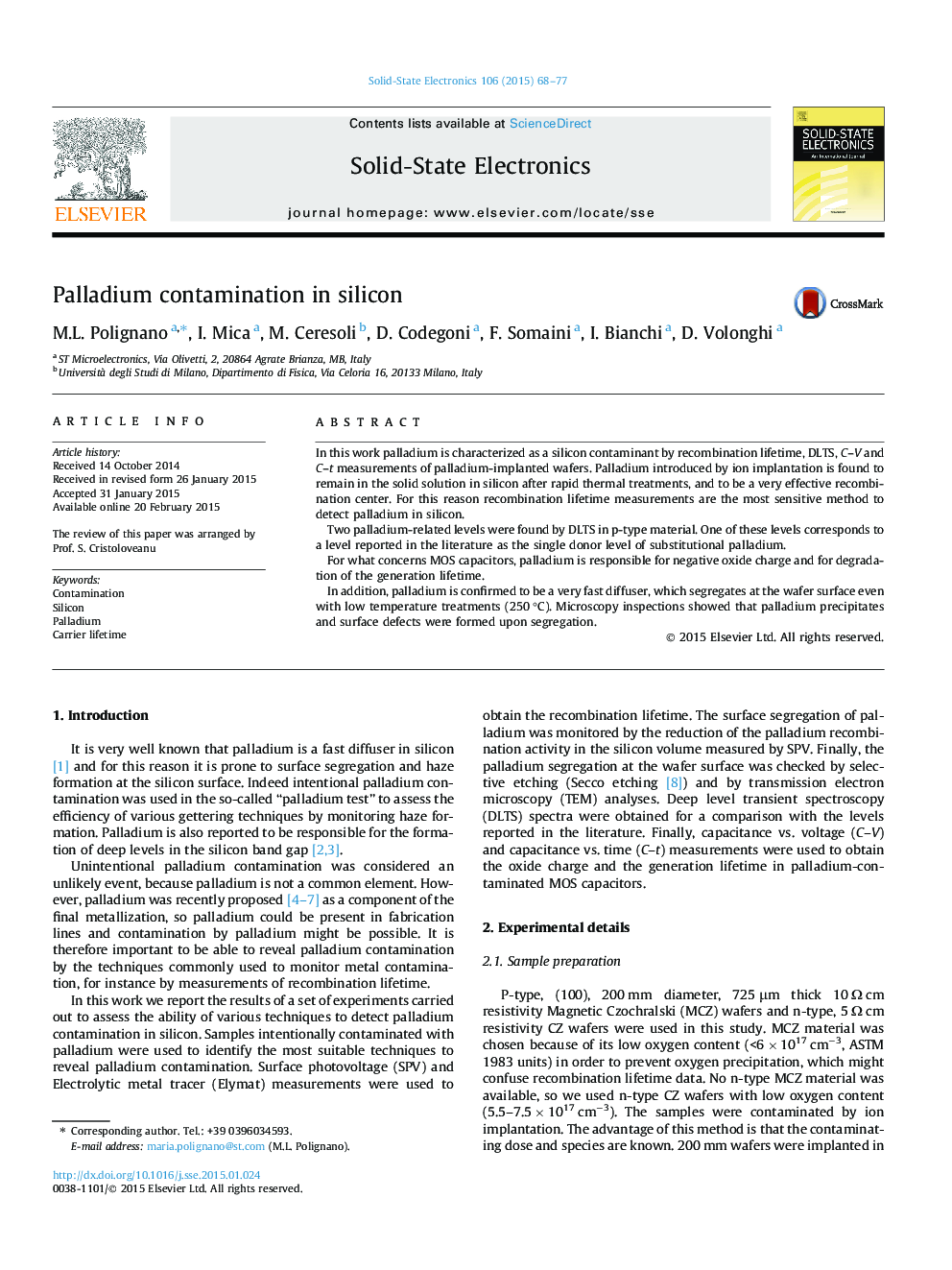| Article ID | Journal | Published Year | Pages | File Type |
|---|---|---|---|---|
| 746485 | Solid-State Electronics | 2015 | 10 Pages |
•Palladium is characterized as a silicon contaminant.•Palladium is an effective recombination center.•SPV is the most effective method to reveal palladium contamination in silicon.•A calibration of SPV data in terms of palladium dose is provided.•Palladium segregation at the silicon surface was monitored SPV.
In this work palladium is characterized as a silicon contaminant by recombination lifetime, DLTS, C–V and C–t measurements of palladium-implanted wafers. Palladium introduced by ion implantation is found to remain in the solid solution in silicon after rapid thermal treatments, and to be a very effective recombination center. For this reason recombination lifetime measurements are the most sensitive method to detect palladium in silicon.Two palladium-related levels were found by DLTS in p-type material. One of these levels corresponds to a level reported in the literature as the single donor level of substitutional palladium.For what concerns MOS capacitors, palladium is responsible for negative oxide charge and for degradation of the generation lifetime.In addition, palladium is confirmed to be a very fast diffuser, which segregates at the wafer surface even with low temperature treatments (250 °C). Microscopy inspections showed that palladium precipitates and surface defects were formed upon segregation.
